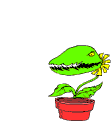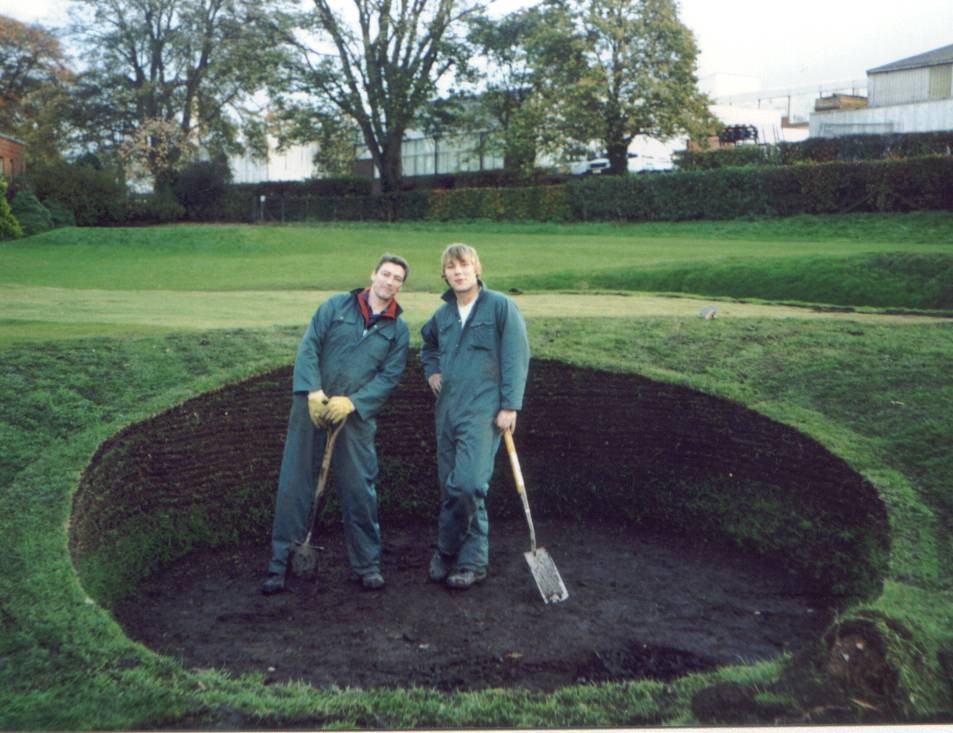I suppose it is best to start here....
The first thing to do is to decide if greenkeeping is for you.
If it is then, read on.
Long hours in the Summer, shorter hours in the Winter, the Cold the Rain, the Wind and the Grumpy Golfers who are having a bad day, and blaming it on the condition of the Golf Course, are all part and parcel of what Greenkeepers have to put up with.
Pests, Weeds, Fungi, Diseases all need to be prevented or erradicated in order to allow the Sward to harvest and so yield a lush surface, not only to play Golf on but, to also encourage the natural Wildlife to retain their status within the sport of Golf.Oh yes, we not only need to keep the Golfer happy but we also need conserve as much of the original enviroment as it is, and maybe even encourage a few more Wildlife Genus to the area.
|
|
As in Scotland, a real pest to the Golfer and Greenkeper is the Midge. A Flying insect that will bite and annoy anyone regardless of their status in society while they are trying to concentrate on the next shot or trying to maintain the course.
In the summer months, the little darling will be at it's most influencial peroid of annoyance.
|
 An Eradicator for the Infamous Midge?.........
An Eradicator for the Infamous Midge?.........
|
How Green Keepers Came About
The Royal Burgess Golfing Society minutes indicated that in 1774, a boy was engaged as "our cady" and considered the first "greenkeeper" with a remuneration of six shillings per quarter year and a suit of clothes. From 1809 to 1820, a person was employed with the title of clubmaker and officer, as well as assistant in keeping the green. However, in 1866 a council made up of two members of each of five area clubs was appointed to take charge of the green and pay jointly a person "to make holes, look after the flags and mend the turf." A motion was carried that a professional golfer be employed as a servant of the club and the entire charge of the course be entrusted to him. Tom Morris was introduced and his duties explained.
Morris would keep the putting greens in good order, repair them when necessary, and make new holes. He would be allowed one man's labour for two days a week and it would be understood that he was to work under the supervision of the greens committee. The newly appointed chief of the links was paid 50 pounds per year and 20 pounds for the upkeep of the links. Although Morris would retire in 1903 after 40 years as greenkeeper, the basics of some of his maintenance practices are still employed today.
Golf historian Horace Hutchinson wrote in his book Golf, "The greenkeeper is engaged by the club at a certain annual salary to look after the ground, arrange (sic) the tees and read the riot act to small boys who play off the greens with their irons, and to generally act as custodian. He will also be the overseer of one or more horny-handed sons of toil who, under his directions, roll, sweep and mow the greens and fill up iron-skelps, and other wounds in the grounds."
Hutchinson explained in 1906 that the profession of modern greenkeeper was no easy one and not to be picked up lightly by a caddie or a professional player. He went on to say that it should be a profession unto itself. Hutchinson believed the greenkeeper should have an elementary knowledge of chemistry, botany, and be a man of acute observation.
|
|
The Origins of Golf:
Some debate about this. Exactly how the game of Golf came about is unsure or unproven.China, Belgium, England, Scotland, Holland all claim to have been the instigators in the game we now call Golf. The only sure thing is that in Scotland in the 18th century Golf associations started to appear. In 1744, the Gentlemen Golfers of Edinburgh (later to become the Honourable Company of Gentlemen Golfers), persuaded the Edinburgh City Council to present them with a Silver Cup, to be competed for on Leith Links. The winner of the Trophy became the Club Captain for the year, and all disputes about golf were to be disputed by him: thus forming the first set of rules for the game in this country.There were only thirteen and they were as follows:
"1. You must Tee your ball within one club's length of the previous hole.
2. Your Tee must be upon the ground.
3. You are not to change the ball you strike off the Tee.
4. You may not remove stones, etc. for the sake of playing your ball, except on the Fair Green and that only within a club's length of your Ball.
5. If your Ball is in water you may lift it out and Tee it behind the hazard, but must allow your Adversary one stroke.
6. If the Balls touch each other, you lift the first 'till you play the last.
7. At Holing you are to play honestly for the Hole and not upon your Adversary's Ball.
8. If you lose your Ball, you go back to where you sruck it and drop another Ball, and allow your Adversary a Stroke for misfortune.
9. When Holing you may not mark your way to the Hole with a Club or anything else.
10. If a Ball is stopped by an outside agency, it must be played where it lies.
11. If you have started on the Down Swing, your Stroke is counted.
12. He whose Ball lies farthest from the Hole is obliged to play first.
13. A local rule, to cover conditions peculiar to Leith Links."
It is on these that all subsequnt sets of rules have been based, though with frequent variations.
It was not until 1897 that the Royal and Ancient Club of St. Andrews, by popular demand, appoint a 'Rules of Golf Committee. The origins of golf are open to speculation but most historians subscribe to the theory that the game originated in the Netherlands. Ket Kolven played on ice in the Low Countries over 500 years ago,used an implement to hit the ball known as a kolf, a word derived from the German Kolbe which simply means club.
It was documented in 1373 that a match similar to the Dutch game was played in Scotland, across-country with teams of four. Using a wooden ball, the target was the door of a selected building on the route.
http://www.north-berwick.co.uk/origins.html
The Open was first called the 'General Open Competition' and had its origins in the rising enthusiasm for golf at Prestwick. These natural west coast links had lain largely unused for golf while it was a winter game played on the east coast, so in 1860 Prestwick decided to organise a tournament themselves.The activist in these endeavours was J.O.Fairlie, an Ayrshire landowner, who was a regular player on the east coast. The Open was to be open to acceptable players only and the description of the event used the word 'caddie' and 'professional' interchangeably. The prize was in the form of a belt, in the usual fashion of a prize-fighter's boxing trophy. Fairlie had, single-handed, set up a competition which was to prosper and grow into the world's greatest golf tournament.
The open competition was held over Prestwick Links up to, and including, 1870, when the champions belt became the property of Tom Morris, junior, who had won it three times in succession. In 1871 there was no competition. From 1872 up to 1892 the Open Championship was played alternately on St. Andrews, Prestwick, and Musselburgh Links The Old Golf Course. The competition was played over 36 holes which meant playing 2 rounds of 18 holes at St Andrews, 3 rounds of 12 holes at Preswick and 4 rounds of 9 holes at Musselburgh Links.
On 16th October 1860 just eight professionals set out to play the first official British Open at Prestwick. Willie Park Senior from Musselburgh won the first Open at Prestwick with a score of 174 his prize being a leather belt, he went onto win the Open three more times, 1863, 1866 and 1875. Born in Wallyford, Willieâ™s golfing started when he was a young boy as a caddie, the young caddies would play together during the long summer evenings. Willie soon established himself as a leading player, going on to challenge the great players of the time, Allan Robertson, Willie Dunn and Old Tom Morris. In 1870 Willie established a firm of club and ball makers, he made wooden clubs, drivers, play clubs, spoons and putters. He was also involved in laying out golf courses, some alone and some with his brother Mungo and with his son Willie Park Junior.
http://www.musselburgholdlinks.co.uk/history/champions.html
|
 A Bunker is Born.......
A Bunker is Born.......
|
College
To the left you can see a picture of myself and Gunner, who is from Iceland, in a bunker that, along with John Stewart, we constructed as part of our National Certificate Course in Greenkeeping.
Our course tutor, Len Stewart took the photo and kindly lent it to me to put up here.
Oh, I am on the left.
|
Leatherjacket Larva
Leatherjackets, tough-skinned, grey-brown larvae 3 to 4 cm long, are the immature stage of the European crane fly.
Swards are most frequently attacked, although leatherjackets can damage clover, strawberries, flowers and vegetables. During the day, leatherjackets feed in on grass roots and crowns in the upper 3 cm of soil. They emerge to feed on grass leaves and stems at night. If the upper soil dries, these larger larvae migrate to deeper soil.
The worst damage to the Sward is done in late spring and early summer, when leatherjackets who have survived the winter resume feeding. The population reaches a peak between mid-June and early July. Larvae may first be noticed after a heavy rain, when they are washed out of the soil.
Adult crane flies emerge to mate and lay eggs in late summer. Although large numbers of the adults may cause alarm, it is the leatherjacket larvae who damage the Sward. Wait until spring to decide if control measures are necessary, because late summer drought or a severe winters reduce the population considerably.
Lack of moisture, disease, or excessive fertilizer, herbicide or insecticide can cause patches of dead or dying grass that may be mistaken for Pest damage.
You may be able to kill large numbers of leatherjackets by raking them up at night and putting them in a bucket containing soapy water.
|
|